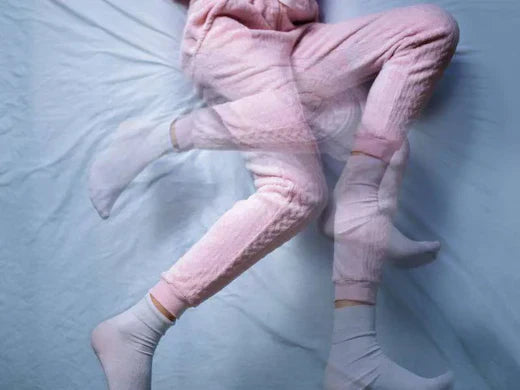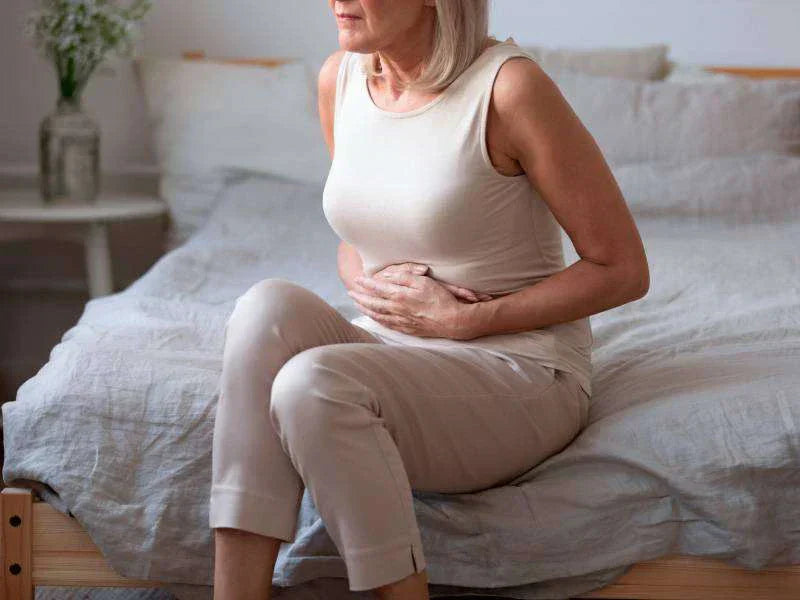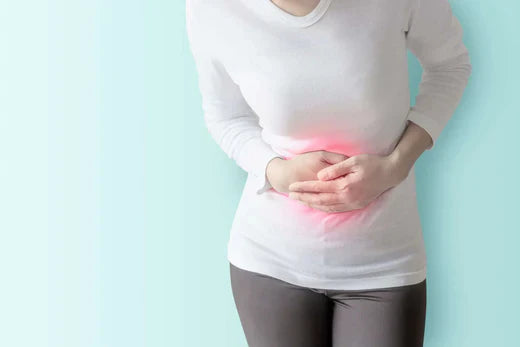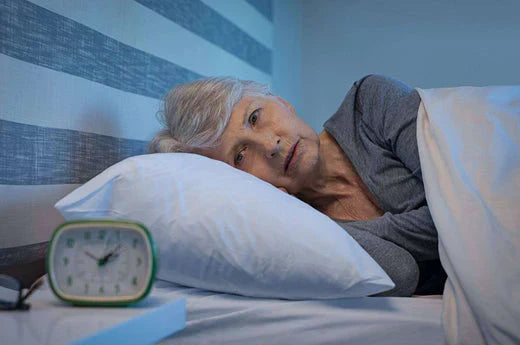Restless legs syndrome (RLS), also known as Willis-Ekbom disease, is a condition of the nervous system that can happen in menopause and peri-menopause. It is characterised by annoying sensations in the legs that are accompanied by the uncontrollable need to move them, to walk or to suspend rest (Mansur, 2021). It is known that RLS can affect up to 15% of the general population (Guo, 2017). And it is also known that (Ohayon, 2012):
- It is more common in women than in men, especially pregnant women
- Age is a key risk factor for RLS, occurring mainly between the ages of 60 and 70
- It is also one of the main causes of sleep disorders during menopause and peri-menopause (Seeman, 2020)
Restless legs syndrome is a problem that affects many women and can impact their quality of life. But why does it happen? Today we explain this and much more about this important complication of menopause.
Why does restless legs syndrome happen?
Although it is not yet fully understood why the restless legs syndrome appears, the following is known (Seeman, 2020):
- There is usually iron deficiency that may be due to certain states such as pregnancy or nutritional deficit
- Iron deficiency also results in decreased oxygenation of neurons
- There is also an alteration in the function of dopamine, an important brain chemical which is caused due to lack of iron
- There is a relationship between RLS and calcium and vitamin D deficiency
- These changes may not occur in all cases of RLS; however, brain iron deficiency is thought to be the main cause
The action of these mechanisms produces changes in brain and nerve function. This causes signals to be produced that are interpreted by the brain as the uncomfortable sensations of the RLS.
What are the symptoms of restless legs syndrome?
Although the main symptom of restless legs syndrome it is the feeling of discomfort, it can also be accompanied by other symptoms and features such as (Mayo Clinic, 2020):
- Feeling of pain, itching, burning, cramping, numbness, or an electric shock in the legs
- They usually appear after resting or having remained motionless or sitting for a while
- It tends to get worse at night
- It can also be accompanied by nocturnal spasms or involuntary movement of the legs during sleep
Keep in mind that these characteristics, as well as the intensity of symptoms, vary from person to person.
Are there causes which accelerate its development?
As already explained, certain alterations must occur in order for the restless legs syndrome. In this sense, there are some conditions in which it is more common to worsen the symptoms. For example (Guo, 2017):
- Pregnancy: Up to 25% of all pregnant women have RLS, probably due to the extra need for iron.
- Hemodialysis patients: kidney disease causes changes in dopamine absorption, contributing to the onset of RLS.
- Heredity: Some people are known to have genes that make them predisposed to early-onset RLS.
- Menopause: although it is not known why it happens, menopause is considered an important cause for the appearance of RLS and even for the aggravation of symptoms (Seeman, 2020).
Likewise, this predisposition also happens equally in surgical menopause; one that happens after a surgery or medical treatment that decreases the function of the ovaries (Huo, 2021). All this suggests how menopause is a key factor in the appearance and development of the RLS.
How is restless legs syndrome treated?
It is recommended that any woman in menopause or perimenopause who sees decreased sleep, or in general the quality of life by the symptoms of RLS, seek medical care. In this sense, there are medicines and prevention measures that help treat and even relieve symptoms from the RLS. For example, some drug treatments that are currently available are (Guo, 2017):
- Iron supplements: in case of anemia should be included with foods rich in iron such as red meats.
- Other medicines: such as ropinirole (a stimulant of dopamine function) compensate for dopamine alterations and are useful when iron supplementation does not improve symptoms.
Keep in mind that in order to receive the appropriate treatment you must always go to your trusted doctor. And, for that, every woman in menopause or perimenopause must be aware of the possibility of suffering restless legs syndrome and that it is possible to treat and prevent it.
Measures contributing to its prevention
There are also several healthy habits that can help prevent the onset of restless legs syndrome during menopause. But also if you already have it, it becomes part of the recommended treatment. These are (Guo, 2017; Fry, 2020):
- Maintain good sleep hygiene. This should be started even before the use of any medication.
- Avoid drinking alcohol and caffeinated beverages, especially near sleep times.
- Perform physical activity routinely.
- Apply massages and hot baths to stimulate the legs.
- Achieve a balanced diet that provides vitamins and minerals such as iron and calcium. Or use vitamin supplements such as D or C to supplement the diet.
- Foods (such as rice, carrot or sweet potato) or supplements with vitamin A which helps absorb iron should also be included (da Cunha, 2019).
These measures can also prevent other complications of menopause that can happen in parallel.
Warning signs
It is advisable to go to the doctor if there is any uncomfortable feeling or if it is suspected of having RLS (Organización Médica Colegial de España, 2016). Similarly, some warning signs to keep in mind are (Bozorg, 2021):
- Symptoms that decrease sleep quality or well-being.
- Presence of pain.
- Constant feeling of discomfort.
- Or worsening of hot flashes or other symptoms of menopause.
Now you know what the restless legs syndrome is, the symptoms, the prevention measures and the treatment. So you're already aware of the important relationship between this syndrome and menopause.
References
Bozorg, A. (2021). Restless legs syndrome. Medscape. https://emedicine.medscape.com/article/1188327-overview da Cunha, M., Campos Hankins, N. A., & Aruda, S. F. (2019).
Effect of vitamin A supplementation on iron status in humans: A systematic review and meta-analysis. Critical reviews in food science and nutrition, 59(11), 1767-1781. https://doi.org/10.1080/10408398.2018.1427552 Fry, A. (2020).
Restless legs syndrome-symptoms and causes. Sleep Foundation. https://www.sleepfoundation.org/restless-legs-syndrome Guo, S., Huang, J., Jiang, H., Han, C., Li, J., Xu, X., Zhang, G., Lin, Z., Xiong, N., & Wang, T. (2017).
Restless Legs Syndrome: From Pathophysiology to Clinical Diagnosis and Management. Frontiers in aging neuroscience, 9, 171. https://doi.org/10.3389/fnagi.2017.00171 Huo, N., Smith, C. S., Gazzuola Rocca, L., Rocca, W. A., & Mielke, M. M. (2021).
Association of Premenopausal Bilateral Oophorectomy With Restless Legs Syndrome. Open network, 4(2), e2036058. https://doi.org/10.1001/jamanetworkopen.2020.36058 Lee, J., Han, Y., Cho, H. H., & Kim, M. R. (2019). Sleep Disorders and Menopause. Journal of menopausal medicine, 25(2), 83–87. https://doi.org/10.6118/jmm.19192 Mansur, A., Castillo, P. R., Rocha Cabrero, F., & Bokhari, S. (2021).
Restless legs syndrome. In StatPearls. StatPearls Publishing. https://www.ncbi.nlm.nih.gov/books/NBK430878/ Mayo Clinic. (2020).
Restless legs syndrome. https://www.mayoclinic.org/diseases-conditions/restless-legs-syndrome/symptoms-causes/syc-20377168 Medical Collegiate Organization of Spain. (2016).
90% of people with restless legs syndrome do not know they have the disease. Doctors and Patients. http://www.medicosypacientes.com/articulo/el-90-de-las-personas-que-padecen-el-sindrome-de-piernas-inquietas-desconoce-que-tiene-la Ohayon, M. M., O'Hara, R., & Vitiello, M. V. (2012).
Epidemiology of restless legs syndrome: a synthesis of the literature. Sleep medicine reviews, 16(4), 283–295. https://doi.org/10.1016/j.smrv.2011.05.002 Seeman M. V. (2020).
Why Are Women Prone to Restless Legs Syndrome? International journal of environmental research and public health, 17(1), 368. https://doi.org/10.3390/ijerph17010368
You May Also Like

JOIN US AND GET 10% OFF
Sign up to our newsletter to access free resources, advice and support.















